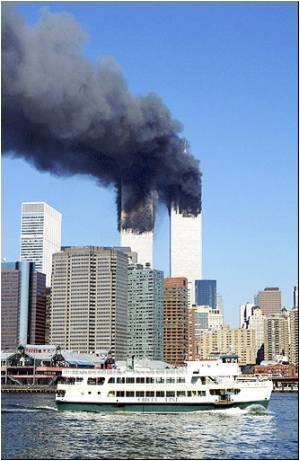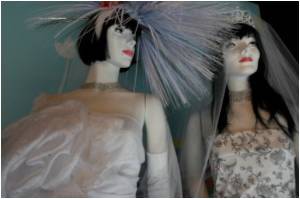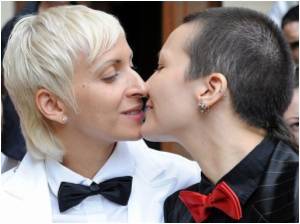
Shapiro, who was teaching in Brooklyn when the Twin Towers fell, wanted to be part of what she called the city's "collective grief."
Obituaries published by The New York Times gave her inspiration: one for each of the approximately 2,500 victims in the World Trade Center.
She hand copied the words on vellum paper, working for four hours a day over nearly half a year, then hung the results, which she says recall Tibetan prayer flags, outside her rural, upstate New York home.
For a year, Shapiro photographed the collection in every light and weather, recording as the vellum tore and cracked, then faded into ghostly fragments, and disintegrated.
"From this death came purity," Shapiro, 55, said.
Advertisement
Big name actors including Samuel L. Jackson will take part in "110 Stories," a play based on first-person accounts of the day, while Sigourney Weaver stars in a return of "The Guys," which was first staged in December 2001.
Advertisement
At the more unusual end of the artistic spectrum, New York's burlesque performers will gather for "Knock Knock Who's There, 911, 911 Who?", which is billed as a chance to "remember together and with our natural bad taste to laugh together."
But for many artists, the anniversary is something of a minefield.
"What's tricky is you don't want to sort of cash in on someone else's tragedy or exploit it," said Tom Wojtunic, artistic director of a new play about 9/11, "A Hard Wall at High Speed. "It can feel like tricky territory."
"A Hard Wall" avoids direct portrayals of the horrific events in Manhattan that day, focusing instead on one of the Florida flight instructors who unwittingly taught the future hijackers.
Even so, Wojtunic said he's still "trying to figure out how to market it. The thought of going to see a 9/11 play doesn't really excite me as an audience member -- who wants to relive it in the theater?"
One artist burned by the raw sensitivities surrounding this anniversary is composer Steve Reich, who had to withdraw an album cover showing the Twin Towers just before the second plane's impact.
The cover merely depicts a scene seen countless times in newspapers and on television, but Reich, who lived near the old World Trade Center, found himself accused of exploiting tragedy.
"There was," he said, "an outpouring of controversy mostly by people who had never heard the music."
Illustrator Molly Crabapple says she steers away from a "hideous and traumatic" event that has been made banal by people seeking to "appropriate the murder of New Yorkers."
To attempt an artistic rendering would "feel strange, like I'm taking something absolutely horrific and I don't feel I could do it justice," said Crabapple, who founded Dr Sketchy's Anti-Art School.
Peter Eleey, curator at MoMA PS1, which is putting on an exhibit called "September 11," said "very few major figures in the art world have taken (9/11) up as a direct subject.
"Part of the difficulty with the event is the spectacularity of it, the fact that it was and remains the most pictured event on earth, witnessed by something like a third of the world's population."
"As a result there was a way in which the visual field became politicized," he said. "I think that has dramatically complicated the way the visual arts have responded."
"September 11" takes an oblique look. Most of the works in the exhibition were created before the event even happened, yet 9/11 is in them all -- whether two trees in a park or a picture taken half a century ago of a newspaper blowing over a road.
"I'm interested in how 9/11 has changed the way we look at the world more generally," Eleey said. "In the context of 9/11 we think about that picture differently."
Wojtunic said much more time is needed before 9/11 can be fully digested.
"It will move into myth the way Pearl Harbor did," he said. "But it hasn't yet."
Source-AFP









